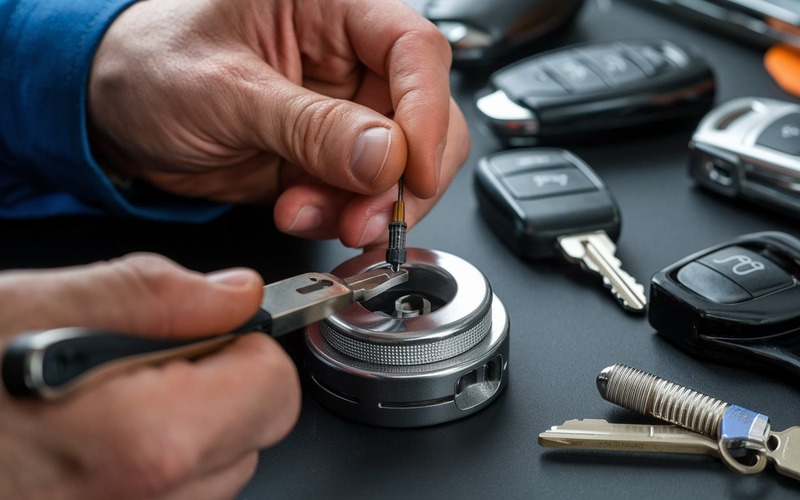
Picture this: You come home after a long day, and something feels… off. Your front door looks slightly different, but you can’t quite put your finger on why. Your stomach does a little flip as you wonder – has someone been messing with my lock? Most people brush off these feelings, but trusting your gut could be the difference between preventing a break-in and becoming a victim.
The truth is, lock tampering happens more often than most people realize. Whether it’s a curious neighbor, a potential burglar, or just someone trying to scope out your home, knowing the signs can save you serious headaches. I’ll walk you through exactly what to look for and how to protect yourself.
Weird Signs Your Lock Has Been Messed With
Let’s discuss a topic that many homeowners overlook: the delicate signals that someone might have meddled with your lock. These aren’t the kind of loud-and-proud break-in indicators that you see in the movies, but rather tiny details that can send a tingle of fear down your spine. Look very closely at your lock’s keyhole and the area around it.
Odd scratches on the lock mechanism aren’t just haphazard marks—they’re likely signs that someone has been trying to either pick the lock or force it open. If you see any fresh metal shavings around the lock, tiny drill holes, or scratch patterns that look out of the ordinary, it’s a pretty good sign that someone is trying to mess with your security.
Strange Marks That Scream ‘Someone Tried to Break In’
Many people don’t realize this: not all damage to locks looks dramatic. When they leave locks in a degraded state, professional criminals often do so in an incredibly subtle way.
If you were to inspect a lock that had been tampered with by a pro, you might not see much of anything. But the lock could still be compromised and be easily opened by an amateur. Here are some signs that say a lock is damaged, even if the damage is hard to see.
You May Like: Can Locksmiths Make Keys For Boats, RVs, Or Motorcycles?
When to Call a Professional (And When to DIY)?
What does this mean for you? Some lock issues are definitely friendly for the do-it-yourselfer, while others scream “call a pro!” If you see minor scratches or a slightly stiff lock mechanism, you’re probably okay to do some basic maintenance. But if you see SERIOUS damage (like deep gouges in the lock itself), a misaligned mechanism or anything that looks like it was engineered to defeat your lock, then you need to call in a locksmith.
Lock installation (not replacement) averages $100-$300, with common residential locks ranging from $20-$150. A mid-range price for a deadbolt is roughly $50. If you don’t think a professional could price your lock at upwards of $100, then you need to do some serious self-assessing on your DIY skills.
Quick Security Upgrades Anyone Can Do
A substantial investment is not a precondition for a home to have truly protective security. What the home must have is a simple, affordable system that allows its inhabitants to feel safe and sound even when home alone.
Here’s the heart of the matter. A home can be made secure with some truly simple measures:
- Look after your existing locks. Reinforce them with additional deadbolts or replace them entirely with locks that are well worth the modest price, like the Schlage B60N for around $80.
What to Do If You Suspect a Break-In Attempt
If you think someone has messed with your lock, your immediate safety is the most crucial thing. Do this first: If you think someone’s in your house right now, don’t go inside. Call your local police and tell them what you think is going on. And don’t just wing it when you report this to the cops.
Document everything suspicious in detail and with clarity-even to the point of taking an easily seen series of photographs that show the lock and any damage to it in a way that’s clear and convincing. You can also visit our Google Maps location for additional security advice.
And yes, most police departments that you report this to will take it seriously, especially if there’s actual physical evidence.
Final Words
Trust your instincts. Wrap up with a motivational, empowering paragraph that encourages readers to take action and prioritize their home’s security. Remind them that being proactive is always better than being reactive.



